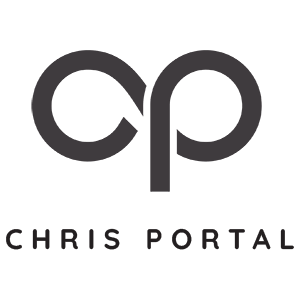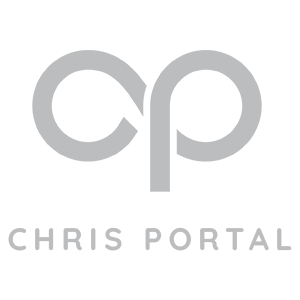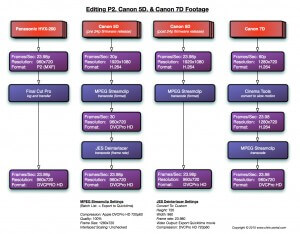What happens when you start a project with 1 camera, and over the span of a year, you end up shooting with 3 different cameras, and a major firmware upgrade tossed in for good measure? What you end up with is format hell in post…
That’s exactly what happened when last September, I started shooting a documentary on a Boston rock band with the Panasonic HVX-200. I knew I was on the cusp of getting a Canon 5D (pre-24p firmware), so when I did, I had already made up my mind to use it for some B-roll and low light concert performance shoots. I knew it’d create a challenge in post, but I was up for it – I figured it’d be a good learning experience.
Well, not only did I make the jump to a Canon 5D, but along the way I went through the 24p firmware upgrade cycle, and added a Canon 7D to the mix for some slow motion shots. In the end, it made post much more confusing and challenging than I had imagined. I was dealing with:
- 4 different types of media
- 3 frame rates
- 3 formats
- 3 resolutions
- (Not to mention some dual system sound I’d need to sync up, but I won’t bother getting into that here)
Since the Canon H.264 is not an edit friendly format in Final Cut Pro, I had to decide what to convert the Canon footage to. The 2 obvious choices were Apple ProRes or DVCPro HD (which is what the HVX-200 converts to). I wanted to use ProRes and preserve the resolution of the Canon video, but most of my footage (sit down interviews) had been shot on the HVX-200. Since I was crunched for time, and the end deliverable was going to be DVD and web, I sacrificed resolution and opted to down convert to DVCPro HD as my editing format.
Getting everything converted such that the various formats, frame rates, and resolutions all matched up got to be overwhelming at times. To organize all the steps I’d need to take the footage through, I put together a flow chart describing what all the steps were, as well as what utilities (MPEG Streamclip, JES Deinterlacer, or Cinema Tools) I needed to use. This is what my ingest and transcoding workflow looked like:
Looking back, once I figured out and documented all the steps involved; when to use MPEG Streamclip, JES Deinterlacer, or Cinema Tools; and the appropriate settings each utility required, the process became straightforward. The one thing I would do differently though is not wait until the end of production to start transcoding all the footage. It was nearly 400GB worth of video that needed to be logged & transferred, and/or transcoded, so it made post get off to a very time-consuming and slow start. Not a wise move on my part.


